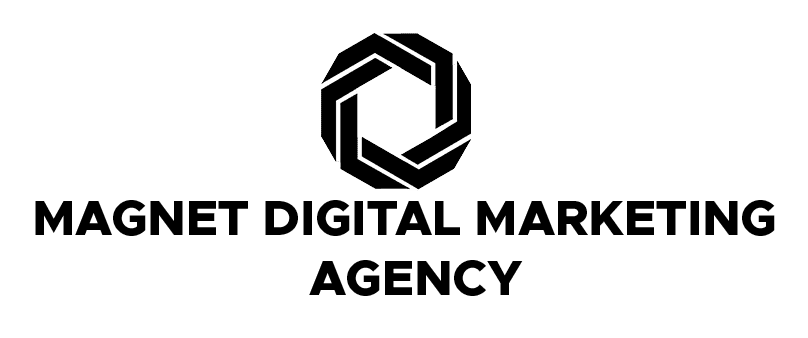Introduction to Social Media Marketing
What is Social Media Marketing (SMM)?
Social Media Marketing (SMM) is a digital marketing strategy that leverages social media platforms to promote products, services, and brands. It involves creating tailored content for each platform to drive engagement and achieve business goals.
Key Components of Social Media Marketing (SMM)
Social Media Marketing (SMM) is a powerful tool for businesses to connect with their audience, build brand awareness, and drive engagement. It consists of several key components that work together to achieve these objectives.
Content Creation
Social media content includes materials shared with your target audience to build awareness, encourage interaction, and boost sales. This content can include:
- Text: Written content such as posts, captions, and blog articles.
- Images: Eye-catching visuals that tell a story or convey a message.
- Videos: Engaging formats like tutorials, behind-the-scenes glimpses, and short-form videos.
- Infographics: Data-driven visuals that simplify complex information.
To create effective social media content that aligns with your brand and resonates with your target audience, it’s crucial to understand their interests, preferences, and pain points. This understanding helps you tailor content that builds a loyal following and establishes your brand as an authority in your industry.
Content Distribution
Once you’ve created content, the next step is sharing it with your target audience, known as content distribution. This involves strategically sharing your content across various social media platforms to reach and engage with your audience. Key platforms include:
- Facebook: Connect with a broad audience and build a community.
- Instagram: Ideal for visually appealing content that resonates with a younger demographic.
- Twitter: Share short, snappy updates and engage in real-time conversations.
- LinkedIn: Connect with professionals and build thought leadership.
- Pinterest: Showcase visually inspiring content and drive traffic to your website.
- Tiktok: Create short, entertaining videos to reach a younger audience.
Audience Engagement

Engaging with your audience on social media involves responding to comments, sending direct messages, and participating in social media groups. This helps build trust, loyalty, and a sense of community. It also provides valuable insights into your audience’s needs and preferences.
Analytics and Reporting
To gauge the effectiveness of your social media efforts, it’s essential to track and analyze performance metrics. This includes analyzing data on reach, engagement, and conversions. Each social media platform provides built-in tools for this purpose, and third-party analytics software can be used to measure your marketing efforts.
Benefits of Effective Social Media Marketing for Business
Effective social media marketing offers numerous benefits for businesses across various industries, including SMEs, startups, e-commerce businesses, educational institutions, the hospitality industry, health and wellness businesses, real estate agencies, and corporate enterprises.
Enhanced Brand Awareness
With billions of users on social media platforms, social media marketing (SMM) provides an extensive audience that significantly boosts brand visibility. Consistent posting and interaction make your brand more recognizable and memorable. For example, SMEs and startups utilize SMM to introduce their brand to a wider audience, while e-commerce businesses showcase their products to attract more customers.
Cost-Effective Marketing
SMM is more affordable compared to traditional advertising methods. It allows SMEs and startups to reach a broad audience without a large budget.

Educational institutions use social media to engage with students and parents, promote events, and share updates, all without incurring substantial costs.
Direct Customer Interaction
Social media offers a platform for direct communication with customers. Businesses can respond to queries, gather feedback, and build a loyal community through these channels. For instance, the hospitality industry uses social media to interact with guests, address concerns, and promote special offers, enhancing the overall customer experience.
Competitive Advantage
Active engagement on social media can help businesses gain an edge over competitors who may not be as present online. This is particularly crucial for e-commerce businesses and startups looking to establish themselves in the market. Health and wellness businesses, for example, share valuable tips and engage with their audience, building a strong online presence that sets them apart from competitors.
Increased Traffic and SEO
Effective social media marketing can drive traffic to your website. By sharing blog posts, landing pages, and other content on social platforms, businesses can improve their site’s SEO performance. Real estate agencies, for instance, use social media to showcase property listings and provide virtual tours, attracting potential buyers to their websites.
Higher Conversion Rates
When executed correctly, social media marketing can yield a high return on investment by converting followers into customers through targeted campaigns and personalized content. For corporate enterprises, social media is essential in generating leads, nurturing prospects, and converting them into loyal clients.
Improved Customer Loyalty
Regular interaction and the provision of valuable content foster trust and loyalty among your audience. By consistently engaging with followers, businesses can cultivate a community of loyal customers who advocate for their brand.
Market Insights

Social media platforms offer valuable insights into customer behavior and preferences, allowing businesses to tailor their strategies accordingly. Analytics tools help businesses understand which content resonates with their audience, enabling them to refine their social media strategy for better results.
Setting Clear SMM Goals
To maximize the effectiveness of social media marketing, businesses should set clear and achievable goals aligned with their overall marketing strategy. Having a social media strategy that aligns with the overall business objectives is key to ensuring brand consistency and identity.
Specific Goals
Define precise objectives that you aim to achieve through your social media marketing strategy. Major goals to achieve on social media include increasing brand awareness, boosting engagement rates, driving website traffic, or generating leads. For example, an e-commerce business may set a goal to increase online sales through targeted social media campaigns.
Measurable Metrics
Establish metrics to track progress towards your goals, such as follower growth, click-through rates, conversion rates, or customer satisfaction scores. Educational institutions will measure engagement metrics to gauge the effectiveness of student outreach initiatives.
Attainable Objectives
Set realistic goals based on available resources, market conditions, and business capabilities. Having goals that are achievable will help you stay focused and consistent. Unattainable goals can derail your morale and give you a negative perception of SMM. For instance, real estate agencies should set attainable goals for lead generation through social media platforms, considering their target audience and competitive landscape.
Relevant to Business Objectives
Your SMM strategy should complement your overall marketing strategy and not be treated as separate. Ensure that your social media goals align with broader business objectives and contribute to overall growth and profitability. For instance, health and wellness businesses should align social media goals with their brand’s mission to promote wellness and lifestyle choices.
Time-Bound Targets
Having a timeframe for achieving your SMM objectives is key to ensuring focus and maximum return on investment. Establishing a timeframe for achieving your social media goals also provides a sense of urgency and accountability. Corporate enterprises may set quarterly targets for social media engagement and customer acquisition to drive short-term business outcomes.
Challenges in SMM
While social media marketing (SMM) is a powerful strategy to achieve your marketing objectives, it can also present significant challenges that businesses need to navigate effectively to attain their goals.
Time-Consuming Management
Managing multiple social media platforms, creating content, and engaging with followers requires significant time and effort.

SMEs and startups may find it particularly challenging to allocate resources for consistent social media management. Utilizing a social media marketing agency to handle SMM objectives can help alleviate these challenges.
Adapting to Rapid Changes
Social media platforms frequently update their algorithms and features, requiring businesses to stay updated and adapt their strategies accordingly. The social media audience evolves over time, demanding continuous improvement in overall SMM strategies. Businesses need to stay consistent with these trends to ensure their objectives align with audience and platform changes. For instance, educational institutions and corporate enterprises must continuously monitor these changes to maintain effective engagement with their audience.
Handling Negative Feedback
Public platforms mean that negative comments or reviews can influence brand reputation. Many online customers rely on comments and reviews to make informed decisions when purchasing a service or product. Without a robust mechanism to address this, businesses may experience reduced engagement and conversions. For instance, the hospitality industry, such as hotels that rely heavily on online bookings, must have robust strategies in place to address and manage negative feedback promptly and professionally.
Measuring ROI
Without well-defined goals and measurement metrics, businesses may struggle to determine return on investment. Tracking metrics such as engagement rates, conversions, and customer acquisition costs is essential to evaluating the success of SMM efforts.
Content Saturation
With a vast amount of content shared daily, standing out and capturing audience attention becomes increasingly challenging. Real estate agencies, for example, need to create compelling content that resonates with potential buyers amidst a competitive landscape.
Successfully overcoming these challenges requires strategic planning, continuous monitoring, and adaptation to ensure that social media marketing efforts contribute positively to business objectives.
Understanding Your Social Media Target Audience

For your social media marketing to be successful, it’s crucial to have a clear understanding of your target audience. This means knowing their needs, preferences, and online behaviors. A deep understanding of these aspects allows you to create compelling and relevant content that captures their attention and fosters engagement. It also helps in crafting tailored marketing strategies that drive meaningful interactions and conversions, ultimately leading to business growth. Your audience’s needs set the foundation for all your social media marketing efforts, ensuring that every post, comment, and campaign resonates with the right people.
Importance of Target Audience Identification
Identifying your target audience is essential for effective social media marketing. By understanding your audience’s demographics, interests, and behaviors, you can tailor your strategies to meet their specific needs and preferences. This targeted approach not only makes your content more relevant but also enhances engagement rates.
Creating Buyer Personas
Buyer personas are fictional representations of your ideal customers, created based on market research and real data about your existing customers. These detailed personas help humanize your audience and provide insights into their goals, challenges, and purchasing decisions. This comprehensive understanding allows you to craft personalized content and campaigns that directly address their motivations.
Conducting Audience Research
Conducting thorough audience research involves gathering both qualitative and quantitative data to uncover insights about your audience. This includes analyzing demographics, psychographics, and behavioral patterns. Utilizing tools like surveys, social media analytics, and customer interviews, you can collect valuable information to refine your marketing strategies effectively.
Analyzing Audience Behavior on Social Media
Analyzing audience behavior on social media involves tracking metrics such as engagement rates, click-through rates, and social shares. This data provides insights into how your audience interacts with your content, which platforms they prefer, and what types of content resonate most with them. For example, understanding preferred content formats and optimal posting times can help you optimize your social media strategy for maximum impact.
Tailoring Content to Your Audience
Tailoring content involves creating personalized experiences that align with the preferences and interests of different audience segments. By addressing their pain points, interests, and aspirations, you build stronger connections and drive meaningful engagement. This approach enhances brand loyalty and increases the likelihood of conversions and customer advocacy.
Choosing the Right Social Media Platforms
With the growing number of social media platforms, selecting the right ones for your business is crucial. Each platform offers unique features and attracts different user demographics, making it essential to understand which align best with your business objectives and target audience. Strategically choosing the appropriate social media channels ensures that your content reaches the right people, fosters engagement, and drives meaningful results.
Overview of Popular Social Media Platforms

Audience: Facebook is the largest social network globally, boasting over 2.8 billion monthly active users. Its user base is diverse, with a broad age range, but it is particularly popular among adults aged 25-54. This makes it a versatile platform for reaching a wide audience.
- Features: Facebook offers various content formats, including text posts, images, videos, live streams, and stories. Businesses can create dedicated pages to showcase their brand, products, and services. Facebook Ads Manager allows for targeted advertising based on user demographics, interests, and behaviors, providing robust options for businesses to reach their ideal audience.
- Business Utilization: Facebook is ideal for building brand awareness, fostering community engagement, and providing customer support. Through targeted ads, businesses can drive website traffic and increase conversions. Features like Facebook Groups enable brands to create communities around their products or services, fostering loyalty and engagement.
- Audience: Instagram has over 1 billion active users, with a strong following among younger adults and teens. The platform is particularly popular among users aged 18-34, making it a prime choice for brands targeting a younger demographic.
- Features: Instagram is a highly visual platform, emphasizing photos and short videos. Key features include Stories, IGTV for longer videos, Reels for short, engaging clips, and shopping tags that allow users to purchase products directly from posts. Influencer partnerships are also a significant aspect of Instagram marketing.
- Business Utilization: Instagram is perfect for visual storytelling and showcasing products. E-commerce businesses can use shopping tags to facilitate direct purchases, while influencer collaborations can help reach a broader audience. Brands can use Stories and Reels to engage followers with behind-the-scenes content, tutorials, and interactive features like polls and questions.
- Audience: Twitter has around 330 million active users, with a broad demographic range but a strong presence among professionals and younger adults. It is a platform for real-time updates and discussions, making it popular for news, entertainment, and industry insights.
- Features: Twitter allows users to post short messages (tweets) of up to 280 characters, along with images, videos, and links. Hashtags are crucial for categorizing content and participating in trending topics. Twitter also offers advertising options, including promoted tweets and accounts.
- Business Utilization: Twitter is suitable for real-time engagement, customer service, and industry networking. Brands can use it to provide timely updates, join trending conversations, and interact directly with customers. Monitoring hashtags and participating in Twitter chats can help businesses stay relevant and visible in their industry.
- Audience: LinkedIn has over 740 million users, primarily professionals and businesses. The platform is geared towards B2B interactions, with a user base that includes decision-makers, industry leaders, and job seekers.
- Features: LinkedIn offers features such as networking, job postings, company pages, and industry articles. Users can share long-form content, participate in groups, and utilize LinkedIn Ads for targeted campaigns.
- Business Utilization: LinkedIn is effective for B2B marketing, professional networking, and recruitment. Businesses can showcase their expertise through thought leadership content, engage with industry peers, and attract talent. Company pages and LinkedIn Groups enable brands to build communities and foster professional relationships.
YouTube
- Audience: YouTube has over 2 billion logged-in monthly users and appeals to wide demographic, particularly younger generations. It is the go-to platform for video content and has a diverse range of channels covering almost every interest.
- Features: YouTube allows users to upload and share videos, create playlists, and engage with viewers through comments. The platform supports live streaming and offers monetization options through ads, memberships, and Super Chat. YouTube Analytics provides insights into video performance and audience behavior.
- Business Utilization: YouTube is excellent for video tutorials, product demonstrations, and brand storytelling. Businesses can use the platform to reach a global audience, educate customers, and build brand loyalty. Consistent, high-quality video content can drive engagement and conversions, while YouTube Ads help reach specific target audiences.
- Audience: Pinterest has over 450 million active users, with a user base that is predominantly female. The platform is popular for discovering and sharing visual content related to lifestyle, DIY projects, and shopping.
- Features: Pinterest allows users to create and share pin boards, search for visual inspiration, and shop through Buyable Pins. Promoted Pins enable businesses to reach a wider audience, while Pinterest Analytics provides insights into pin performance and audience interests.
- Business Utilization: Pinterest is ideal for e-commerce businesses, DIY projects, and home décor brands. By creating visually appealing pins that link to product pages or blog posts, businesses can drive traffic and sales. Pinterest’s visual search and shopping features enhance product discoverability and facilitate purchasing decisions.
Identifying the Best Platforms for Your Brand
Choosing the right social media platforms involves aligning your audience demographics, content formats, and business goals. Consider the following factors:
- Audience Demographics: Understanding your target audience’s age, gender, location, and interests is crucial. For example, if your primary audience is young adults, Instagram and YouTube may be more effective than LinkedIn.
- Content Suitability: Different platforms excel with different content types. Instagram and Pinterest are visual, while Twitter and LinkedIn are better suited for text-based updates and professional content.
- Business Objectives: Define your marketing goals, such as brand awareness, lead generation, customer engagement, or sales. For instance, if your goal is to drive e-commerce sales, Instagram’s shopping features and Pinterest’s Buyable Pins can be very effective.
Creating a Social Media Presence
Establishing a strong social media presence involves several key steps:
- Profile Optimization: Ensure your profiles are complete with consistent branding, high-quality visuals, and accurate contact information. A compelling bio or description helps convey your brand’s value proposition.
- Content Strategy: Develop a consistent posting schedule and create content themes that align with your audience’s interests. Use a mix of content types (e.g., images, videos, stories) to keep your audience engaged.
- Engagement: Actively respond to comments, messages, and mentions to build relationships with your followers. Engagement helps foster a sense of community and loyalty, encouraging more interaction and sharing.
Platform-Specific Best Practices
To maximize your social media strategy, follow these platform-specific best practices:
- Facebook: Use Facebook Ads to reach targeted audiences and leverage Groups to build communities. Post a mix of content types, including videos and live streams, to keep engagement high.
- Instagram: Utilize Stories, Reels, and IGTV to create varied content. Collaborate with influencers to expand your reach and use shopping tags to drive e-commerce sales.
- Twitter: Engage with trending topics and use hashtags strategically. Respond quickly to mentions and direct messages to provide timely customer service.
- LinkedIn: Share thought leadership content and industry insights. Participate in LinkedIn Groups to connect with professionals in your industry and use LinkedIn Ads for targeted B2B campaigns.
- YouTube: Focus on high-quality video production and optimize your video titles, descriptions, and tags for search. Engage with viewers through comments and community posts to build a loyal audience.
- Pinterest: Create visually appealing pins with clear calls to action. Use rich pins to provide additional context and link back to your website to drive traffic.
Read also
How Social Media Marketing is Revolutionizing Businesses in Kenya
 seolounge
seolounge




Leave a Reply